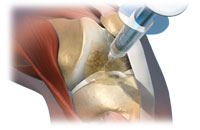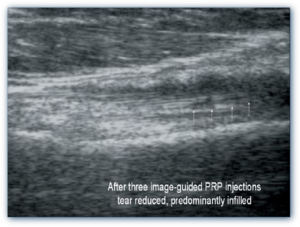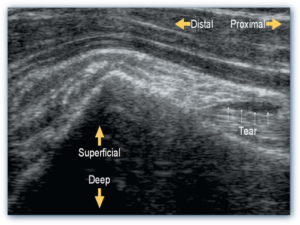Creation of PRP is simple, painless, and conveniently done at an office visit. At Advanced Pain Management Clinic, we utilize EmCyte PurePRP II. The entire process of drawing blood to solution preparation only takes approximately 25-30 minutes. A small amount of blood is drawn from the patient and placed into an EmCyte Executive Series Centrifuge II. The centrifuge is a machine that spins the blood precisely at high speeds in order to separate the blood into red blood cells and concentrated platelets. Once the blood is separated the red blood cells are discarded, concentrated platelet rich plasma (PRP) is ready to be used in the treatment process.


The injection process does not take more than an hour, which includes the creation of the PRP as explained above. The platelet-rich portion is collected and injected back into the injured tendon, ligament, muscle, joint, or disc that has been determined to be a source of pain that is not healing appropriately. When structures around the spine are being injected, live fluoroscopy guidance is used to assure safe and proper placement of PRP at the affected site. In the extremities, ultrasound-guidance is used to inject PRP into the appropriate tendon, ligament or joint that is being targeted. Injections are performed under image guidance in order to ensure precise placement of PRP. The number of injections varies based on each patient’s individualized condition. In many cases, only one injection is needed. However, the number of injections may range anywhere from one to six injections done over time.
Generally speaking PRP injections are not painful. However, the discomfort level depends on the part of the body being treated. Injections into the joint are of minimal discomfort. There is sometimes a small amount of pain after the procedure. This, generally, does not last more than a few days and can be minimized with over the counter Tylenol. It is critical to avoid anti-inflammatory medications such as Aleve, Motrin, Celebrex, Naprosyn, and Mobic. These drugs may impede the healing process.
Creation of PRP is simple, painless, and conveniently done at an office visit. At Advanced Pain Management Clinic, we utilize EmCyte PurePRP II. The entire process of drawing blood to solution preparation only takes approximately 25-30 minutes. A small amount of blood is drawn from the patient and placed into an EmCyte Executive Series Centrifuge II. The centrifuge is a machine that spins the blood precisely at high speeds in order to separate the blood into red blood cells and concentrated platelets. Once the blood is separated the red blood cells are discarded, concentrated platelet rich plasma (PRP) is ready to be used in the treatment process.




The benefit of PRP therapy is that it is actually a permanent fix. The time frame for experiencing results is dependent upon the area of injury and the extent of the injury. On average, most patients start to see signs of improvement in the form of reduced pain or increased function within four to six weeks. Continuing a well-designed course of physical therapy and avoidance of aggressive physical activity or overloading the injected tissues is advised in the weeks that follow the injections. This is done to allow the tissues to heal best.
Overall, PRP is an especially safe treatment option with no risk of allergic reaction because it is your own blood. However, anytime a needle is placed in the body, there is a risk of infection, bleeding, and nerve damage. These risks do not happen often, and are very rare. Other risks depend on the area being treated. If you are unsure of the risks of your specific condition, consult your physician. In general, PRP is not considered a first line treatment and is usually considered after other more traditional treatments have failed.
Dr. Michael Willens is an award-winning, Cleveland Clinic Foundation trained, Board Certified Pain Management doctor and Board Certified Anesthesiologist practicing and serving Jacksonville and St. Augustine, Florida.
3003 Claire Ln., Building 100, Jacksonville, Florida 32223
Phone: 904-683-2596
Email: info@painawayjax.com
Fax: 904-683-2597